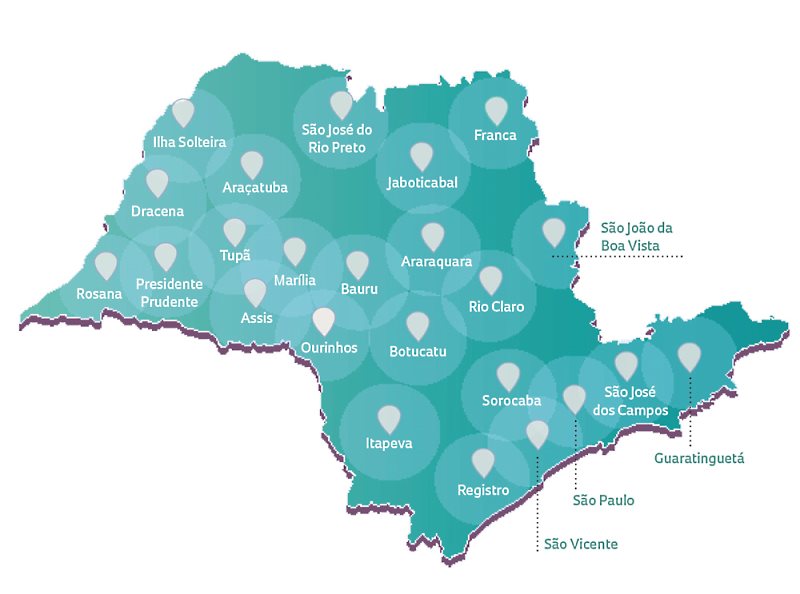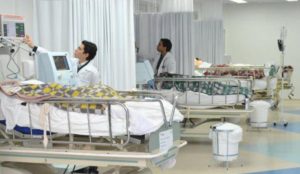
About the University
UNESP is located all over the state of São Paulo State and is a well known success-story of multicampus universities world-wide. It is currently the third largest university in Brazil and counted among the most important universities in Brazil. UNESP, as two other universities, is funded directly by the state and stands out for its superb education, strategic research projects and the provision of services for the community.

The university has been established in 1976, when several individual institutions – scattered all over economically most influential state of São Paulo – have been unified under one single institution. Since then, UNESP has a broad variety of theoretical and experimental science courses, as for example Engineering, Health, Communications, Humanities, Social Sciences, Arts, and others.
Over time, many additional faculties have been introduced into the university and nowadays UNESP is comprised of 34 different Campi in 24 cities of the state of São Paulo, 23 more campi in Brazil, one campus on the coast and the administrative headquarter in São Paulo, the states capital city. Thus, Unesp is covering almost the entire spread of São Paulo state.
In 1989, an important year for the future of higher education institutions in the state, the funding out of tax-revenue of three state universities has been decided. This financing structure made way to an autonomous planning capability for the universities. In the following years, UNESP has changed its profile through co-responsibility of its incorporated institutions.
UNESP has, as one of the very first universities in Brazil, actively implemented affirmative action in 2014 by its policies of social and racial quotas. These quotas (50% of students from the public education system, among those 35% for colored or indigenous students) helped in the fight against racism and social differences still prevalent in Brazil and made the student body much more diverse. UNESP has reached those goals by 2018 and is today one of the most inclusive higher education institutions in Brazil.
UNESP Mission:
To perform its function through education, research and outreach, with free and critical spirit, oriented by ethical and humanistic principles. Promoting professionalization that’s committed to quality of life, technological innovation, sustainability, social equity, human rights and democratic access. Generate, propagate and foment knowledge, contributing to the overcoming of inequalities and to the full exercise of our citizenship.
Location:

Our university hospital is located in the state of Sao Paolo, approximately 225 Km from the capital of São Paulo. There is convenient transportation from any major airport in the vicinity (e.g. Guarulhos International Airport (GRU) in São Paulo) by bus available. The trip will take about 3 1/2 hours.
Hospital Facts:

Our University Hospital Campus includes a total area of 70,000 m2.
The hospital serves as most comprehensive medical institution in the area most medical treatments of the surrounding population. To achieve this, FMB is offering a total of 417 hospital-beds and 52 beds for Intensice Care. It features a total of 18 surgical rooms open for planned and emergency procedures of all branches. Other facilities include 198 medical offices, 31 specialized treatment facilities, as well as 3 obstetric rooms.
Annually, the hospital schedules more than 420000 medical appointments and receives about 25000 in-house patients. The surgery department performs more than 12000 surgeries per year. Other treatments include roughly 21000 hemodialysis sessions, 14000 chemotherapy treatments, as well as 24000 radiotherapy sessions each year.
The Internship in Numbers:
The FMB UNESP university hospital offers medical students about 90 placements/year and has more than 560 domestic students enrolled continuously.
The training of our own students is divided into 3 different cycles:
– Basic — 1st and 2nd years
– Professionalizing — 3rd and 4th years
– Internship — 5th and 6th years

